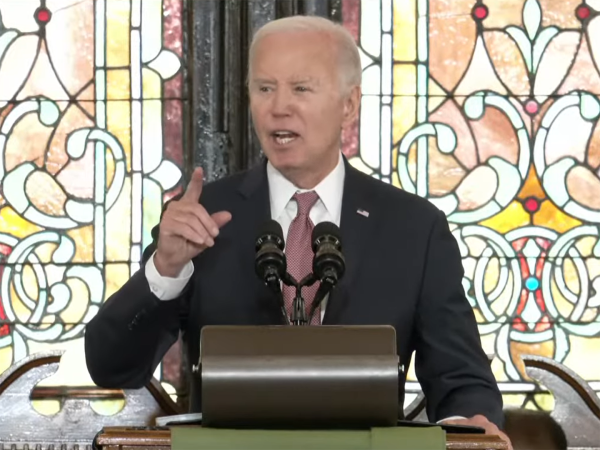The Pros and Cons of the Keystone XL Pipeline
President Biden shuts down construction of the Keystone XL Pipeline in an effort to help with climate change.
On his first day of office, President Joe Biden signed an executive order to halt the Keystone XL Pipeline. If you have checked your news outlets lately, you might have seen the controversy surrounding this topic. Some express the need for the Keystone Pipeline as it provides jobs, while others argue that shutting down the pipeline is needed due to the negative effects it has on our environment.
What is the Keystone Pipeline?
For those who do not know, the Keystone XL Pipeline is a proposed oil pipeline that would extend from Alberta, Canada to Steele City, Nebraska. Back in 2015, President Barack Obama had rejected the project due to the environmental damage it could potentially cause. However, during Donald Trump’s term, he revived it stating that the pipeline would “create 28,000 construction jobs.” Now newly President-elect Joe Biden has revoked the permit for construction, blocking the project immediately and effectively. The purpose of this pipeline is to increase transport of oil sand crude from the tar sand fields of Alberta to the refineries in the Midwest and Gulf Coast of the U.S.. With this pipeline’s construction being brought to a premature close, lets discuss the pros and cons of would have been.
The Pros
We are starting off with a high note: The Pros. The obvious benefit of this project is that the company, TC Energy, stated it would have created around an estimated 10,400 American jobs and 2,800 Canadian Jobs. The increase in oil production would also mean less dependence on Middle Eastern countries and in turn make the cost of fuel less expensive. When you read these pros, this project seems legitimate. However, there are always tradeoffs to these situations, some being more consequential than others.
The Cons
Now that I have listed the benefits of the pipeline it is time to list the cons, and there are many. The most widely known issue with the Keystone XL Pipeline project is its environmental impact. And many are wondering, “Why this pipeline? What makes it so special?” The issue with this pipeline is the energy strategy that would be used to process large quantities of oil from the tar sands in Canada. According to the US Department of Environmental Protection, processing oil sands crude oil would increase greenhouse gas emissions by more than 80% than the oil refined in the United States. James Hanson, a leading climate scientist, explained, “If the tar sands are thrown into the mix, it is essentially game over. There is no practical way to capture the CO2 while burning oil. We cannot get back to a safe CO2 level if unconventional fossil fuels, like tar sands are exploited.”

The Bureau of Labor Statistics estimated the number of oil and gas extraction jobs at roughly 160,000 at the end of 2020, and coal mining jobs slipped below 50,000 total by year-end.
— Eric Rosenbaum
Continuing the negative effects this pipeline has on our environment, the Keystone Pipeline has leaked more than a dozen times, with one incident in North Dakota that sent a 60ft 21,000 gallon geyser of tar sand oil into the air. Most recently, the pipeline was temporarily shut down after a spill in North Dakota (again) that was around roughly 378,000 gallons. The spills expose toxic chemicals in tar sands oil to nearby rivers, wildlife, and the wetlands. There has been more increased risk with the use of the Keystone Pipeline as a study co-authored by a scientist from TC Energy (yes the company that owns the Keystone Pipeline) found that the anti-corrosion coating the pipes has been exposed for decades.
This pipeline’s route also planned to cross the plaintiff tribes’ homelands even though the tribes have not yet to be consulted, which is required by law an the United Stated Department of Interior (DOI) policy. By allowing the project to extend onto Native American Land, this construction fails to uphold the United States’ policies meant to protect the Tribes lands and natural resources, which makes it illegal.
What Now?
Now that construction of the pipeline has been shut down, the biggest worry is jobs. How can those that lost their jobs support themselves and their families now? Well, according to Eric Rosenbaum, “Green energy advocates, including major companies like Ford and Amazon, are talking massive job climate jobs creation.” Not only are these jobs surrounding renewable energy more sustainable, but also higher paying. During the pandemic “Amazon hired over 400,00 workers” and now “employs more than one million globally,” compared to the “the number of oil and gas extraction jobs at roughly 160,000 at the end of 2020” (Rosenbaum)Unfortunately in many states such as Texas, Arizona, and Alaska, oil and gas are a big part of the economy, making this movement towards green energy detrimental towards their economy. These states can make efforts toward switching the focus towards renewable energy as well, however, it would be a very difficult task, such as regional changes and retraining. While we will never be completely independent of oil, the industry is shrinking as more push for efforts towards renewable and sustainable energy for the sake of our environment and our future on this planet.













